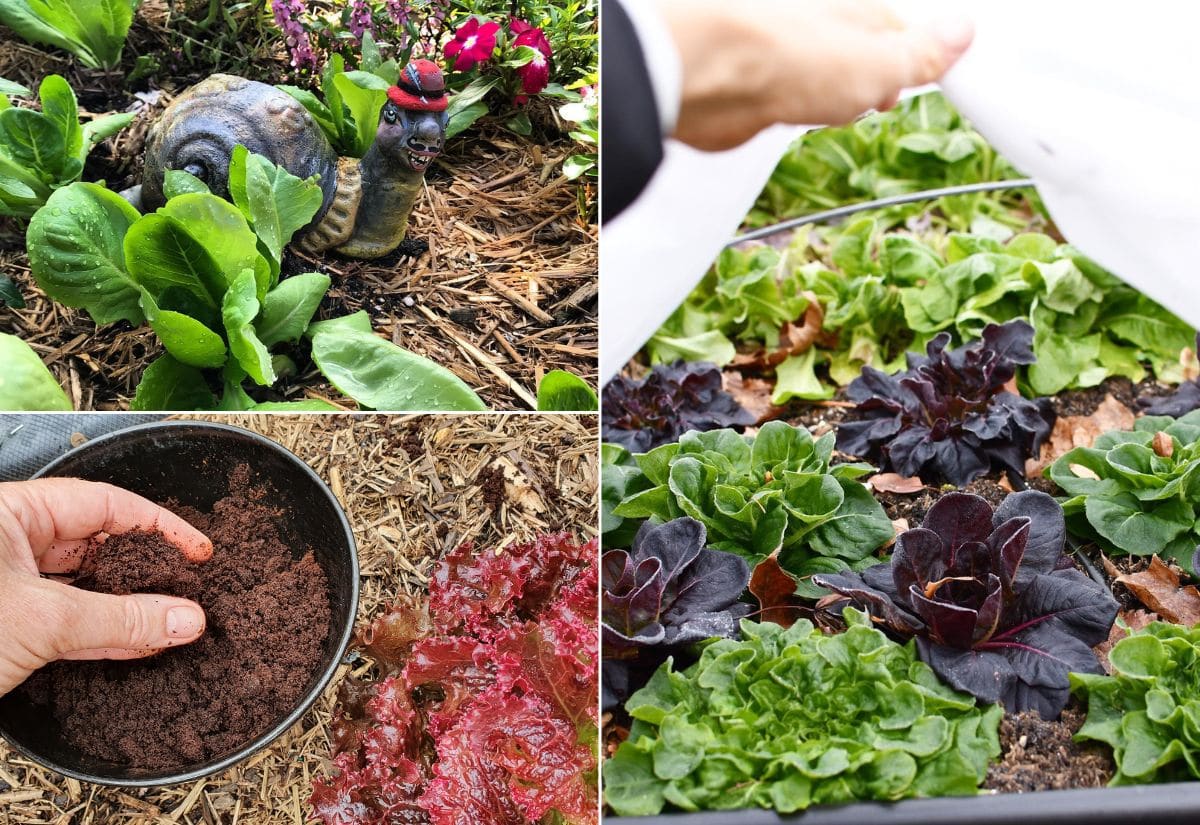
As the sun starts shining a bit more each day, it’s prime time to get those lettuce seeds into the garden. But guess what? It’s not just us gardeners who are celebrating, though—slugs, snails, and other critters are also throwing a party, eagerly awaiting their first taste of your fresh, leafy greens. After a tough winter with little to nibble on, your garden is like a gourmet buffet for these little pests.
Here’s the lowdown: To make sure those crisp leaves of your Little Gem, Loose Leaf, Buttercrunch, or Lamb’s Lettuce end up in your salad bowl instead of being gobbled up by garden critters, you need to act fast.
It’s vital to shield your lettuce as soon as it hits the dirt. Believe it or not, the word spreads fast in the critter world—it’s like they have their own bug-sized social network! If you’re not quick, your tender seedlings might just become the hottest gossip among the slimy crowd.
So, how do we keep the munchers from eating & damaging your lettuce plants? Let’s walk through six easy yet effective tricks to guard your greens. Trust me, a little effort now will keep your garden party pest-free!
1: Use Insect Netting to Keep Pests Out
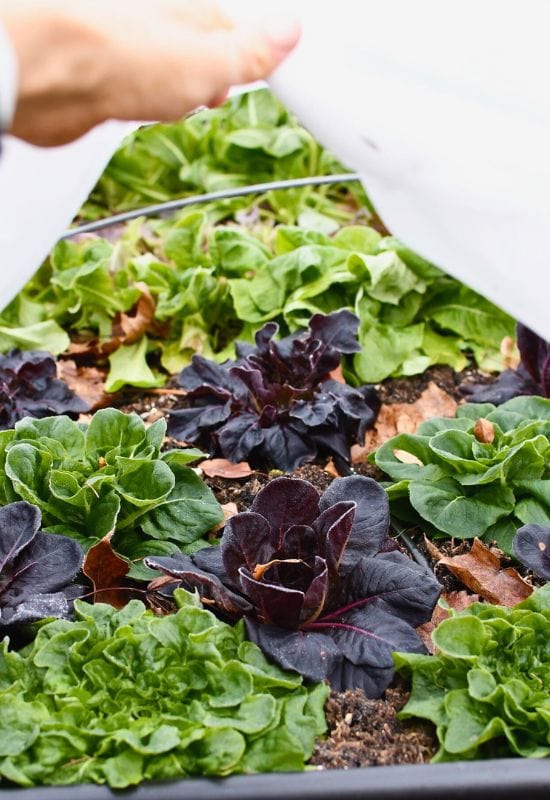
By far the most common way to protect lettuce and other leafy greens from hungry slugs, snails and insects, is to use insect-proof netting. It is very efficient, and easy to use, and recyclable as well. But you need to know how to lay it, so, here’s how.
- The net needs to be at a safe distance from your lettuce leaves; you cannot just rest it directly on them; it would give slugs, snails and insects a way of getting to your seedlings…
- It is best if you give 6 inches (15 cm) on top of the grown-up lettuce size, above and to the sides.
- You can cover the whole lettuce bed with one net, which is simple and functional.
- Ideally, use hoops, like the ones for polytunnels; they are cheap, especially plastic ones.
- If you don’t have them, use stakes all around the lettuce bed, and lay the net to cover both the top and the sides.
- Allow 10 inches (25 cm) of the net to rest on the soil, on the outside so you can…
- Place weighs on this part to keep the net safe, like stones, bricks etc.
You can leave the net on till harvest, so you won’t worry about slugs and snails any more.
2: Use Old Plastic Pots Over Seedlings
How about if you don’t have an insect-proof net? I suggest you get one soon, but in the meantime, little insects, snails and slugs will have found your tender lettuce and munched on their leaves (they are not as slow as we think!) So, I have a simple, cheap makeshift solution for you: old plastic pots!
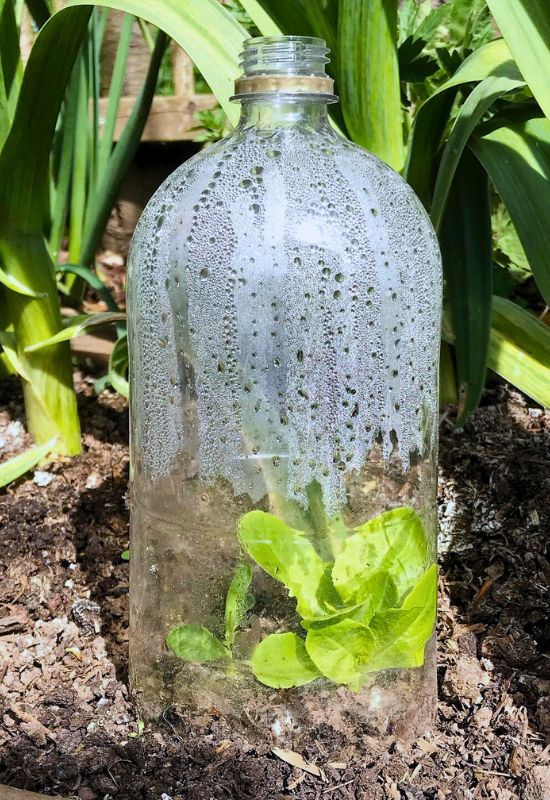
These will protect your lettuce leaves from slugs, snails and millipedes, but not from birds and flying insects. Still, good for the first few days. Here’s what you need to do.
- Get some old plastic pots from your shed, they should be at least 4 to 6 inches across and tall (10 to 15 cm).
- Get some scissors, and cut off the bottom.
- For extra safety, wrap some copper tape around the top of the pots. This is optional, but very effective and more professional, because slugs and snails don’t like to cross it (a little gardening secret for you)!
- Now, simply nestle the pot in the ground around your lettuce seedlings, one by one, face up, burying it lightly into the soil, so birds and wind don’t topple them.
- Done!
It’s also a good way to recycle old pots. You may say, “But they can climb on top!” yes, but there’s that little edge on the outside which will stop them!
3: Grow Lettuce In Corrugated Raised Beds
This is an expensive method, but you can then use it as a proper raised bed to protect your tender lettuce leaves, so, if you were thinking about moving to this technique… The key thing is to choose a corrugated raised bed frame, not a wood one, not a smooth one. These are literally devised to stop slugs and snails from climbing into it!
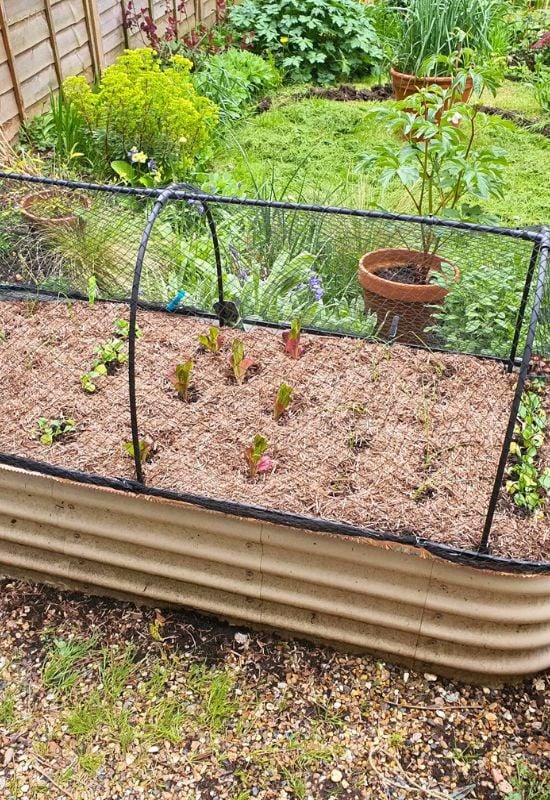
It is simple and it will save your tender lettuce leaves from snails and slugs, and it has flexible applications.
- Simply place the corrugated raised bed around your lettuce seedlings.
- You can lay an insect-proof net on top (with weights, like stones) to protect your tender leaves from birds and insects as well.
- Wrap the top layer with copper tape, for extra safety (you can use this tip with all raised beds).
- Or simply… Grow your lettuce in a corrugated raised bed.
This also leads me to another tip: if you have different types of raised beds, use the corrugated ones for tender leaved vegetables…
4: Use Coffee Grounds and Eggshells To Protect From Soft-Bodied Insects
Now we move to the cheap and easy side, with a common method, which is partly successful, but it has its drawbacks… Using coffee grounds and/or eggshells is quite common to protect the tender leaves of your lettuce seedlings from slugs and snails, and it’s very quick too…
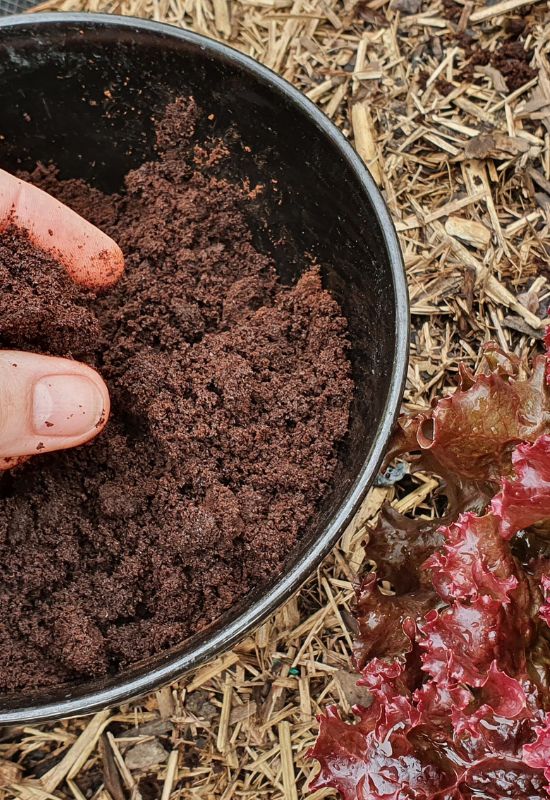
- Simply scatter a dense layer of brewed coffee grounds and/or eggshells around your seedlings or the bed.
- Eggshells will last after rainy days, but coffee grounds will be washed away or into the soil, so replace them after a rainy day.
The disadvantages are clear:
- It is not a permanent solution, as it needs replenishing.
- You may not have enough eggshells and coffee grounds.
- It does not protect your tender lettuce leaves from birds and insects.
Still, it can work as an emergency, before you move to a more stable solution.
6: Companion Planting to Ward off Pests and Protect Lettuce
A more permanent, professional and even “fun” and creative way to protect your tender lettuce leaves from slugs, snails and other animals is to grow them with other varieties (companion plants) that repel them.
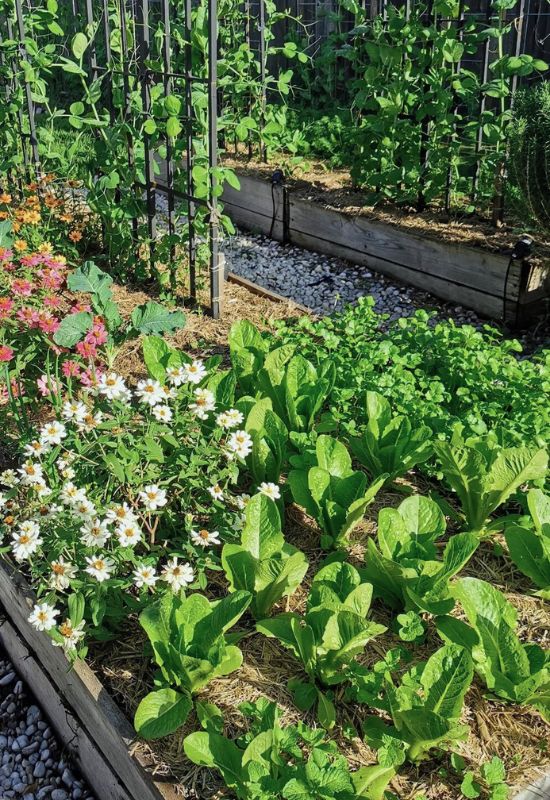
This will also give you full protection throughout the season, till the lettuce leaves end up on your dinner table, and it is very natural indeed. You can choose to grow these varieties around the bed, as a barrier, but also amidst your endive or radicchio seedlings.
Of course, this is not suitable for intensive farming, but excellent for small, family vegetable gardens. Here are some companion plants for you…
- Marigolds (Tagetes spp.), especially good against insects.
- Geraniums (Pelargonium spp.) yet another insect deterrent, but good against snails and slugs too (they don’t like their smell).
- Lavender (Lavandula spp.), snails and slugs don’t appreciate its fragrance.
- Catmint (Nepeta spp.), yet another plant with a smell snails and slugs don’t like.
- Rosemary (Rosmarinus officinalis), for the same reason, against snails and slugs.
- Japanese anemone (Anemone hupehensis), not the easiest plant to grow, but good against slugs and snails.
- Woodworm (Artemisia absinthium) hated by snails and slugs, and maybe to use around all your vegetable garden, as it grows fairly tall. Yes, it is the plant used to make absinthe…
- Lamb’s ears (Stachys bizantia), quite pretty, and it will keep slugs and snails away with its dense and hairy foliage. Good around the bed as a “soft wall”.
Then there is the strange case of garlic (Allium sativum)… Slugs and snails don’t like it, and they detest its smell. However, apparently they only eat it when they are sick!
So, assuming they are healthy, planting garlic a bit here and bit there in your lettuce bed and all over your vegetable garden, is a fairly effective deterrent.
6: Use Simple Recipes and Natural Products to Kill and Deter Snail
If you are thinking of using chemicals, think again! Of course they work, and of course they are cheap. But they also end up in your salad bowl… What’s more, lettuce is a fast crop, so you won’t have much time to allow the leaves to “cleanse” from all the substances they have absorbed. And then, in those weeks… Hungry visitors will come back.
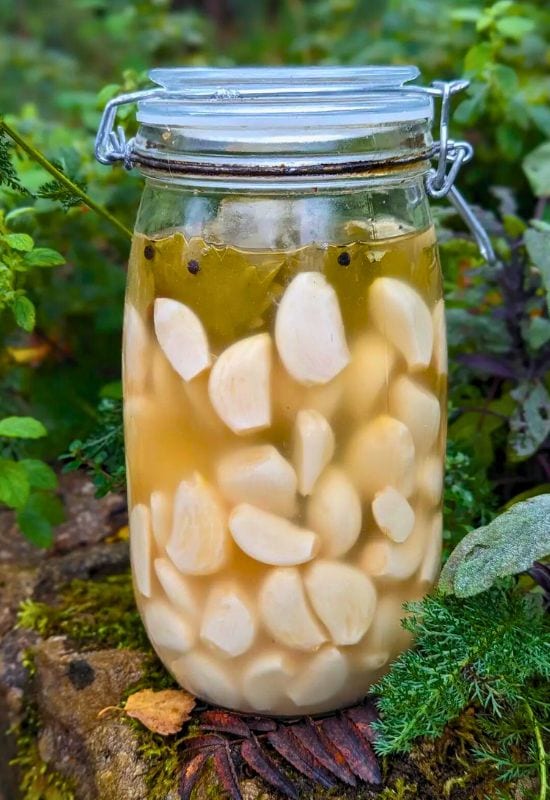
Don’t even think about neem oil; to start with it doesn’t seem to be that effective against slugs and snails, your worst enemy when it comes to slugs and snails. Next, it is toxic to us, so I would never use it on fast crops like lettuce and spinach etc…
So, what can we use?
I will give you a simple recipe now, but if you want many more, we have a detailed and fully free ebook with 80 “potions” for your garden (pest control, fertilizers, rooting agents, weed killers etc.), which you can download here. Honest, fully free!
But now…
- Crush two or three cloves of garlic.
- Put them in a bottle of water.
- Add one or two chili peppers.
- Seal the bottle.
- Wait for 2 days.
- Filter and pour the garlic water into a spray bottle.
- Add a tablespoon of natural liquid soap.
- Shake well.
- Spray your lettuce and the soil abundantly!
That’s it, slugs, snails and most insects hate both garlic and chili (you can imagine the irritating effect it has on them). Actually, I found out that this double mixture is not just a repellent, but a natural pesticide for small creatures like aphids (and they love your fresh greens!)
Repeat every week or so, and after it rains.
“Will my lettuce taste like garlic?” you may ask… Well, no, as long as you don’t spray it for 48 hours before you harvest it (24 is enough, but to be safe…) and you wash it well.
So, until you read our “Garden Alchemy” book this simple recipe will keep your tender lettuce leaves safe, but I know you have a question…
Can I Use Salt to Keep Slugs and Snails off My Lettuce?
Yes, you can, but using too much salt on your soil increases its salinity – it makes it salty, and very few plants tolerate it. So, it’s fine as an emergency, but not repeated in your vegetable (or decorative) garden, or it will become infertile…

Written By
Amber Noyes
Amber Noyes was born and raised in a suburban California town, San Mateo. She holds a master’s degree in horticulture from the University of California as well as a BS in Biology from the University of San Francisco. With experience working on an organic farm, water conservation research, farmers’ markets, and plant nursery, she understands what makes plants thrive and how we can better understand the connection between microclimate and plant health. When she’s not on the land, Amber loves informing people of new ideas/things related to gardening, especially organic gardening, houseplants, and growing plants in a small space.
